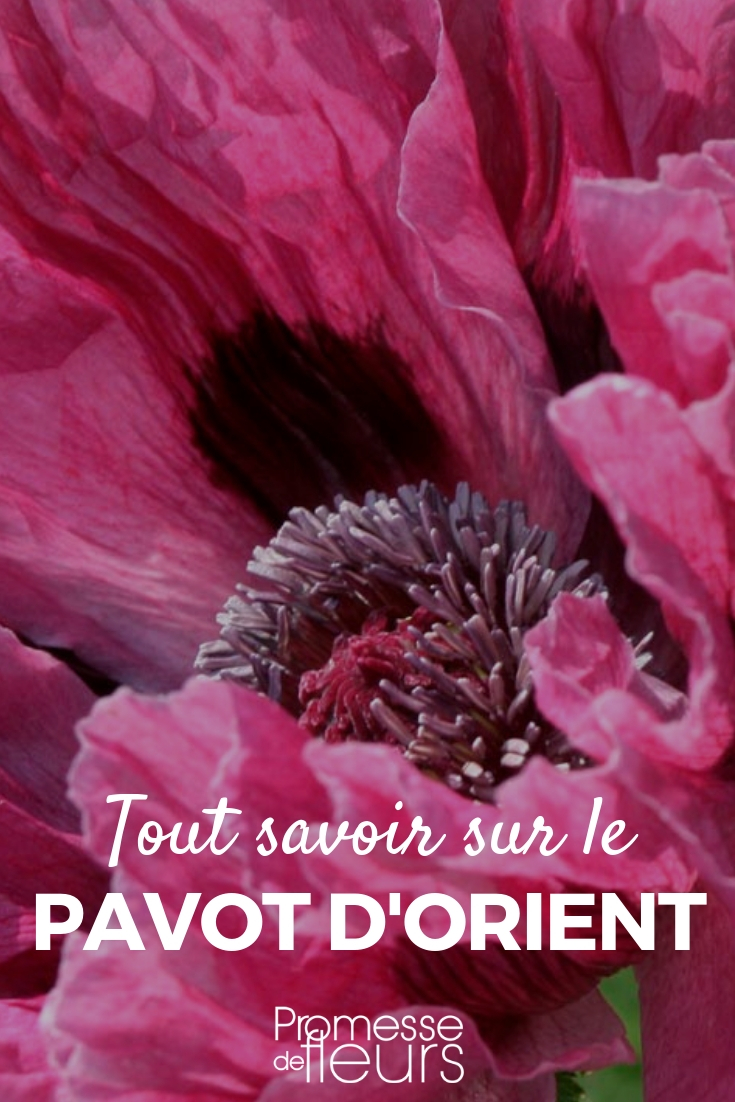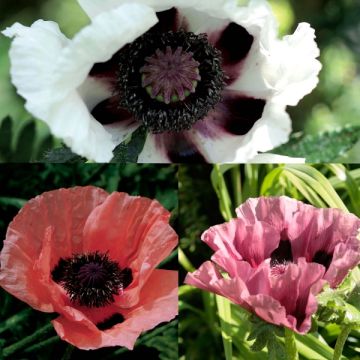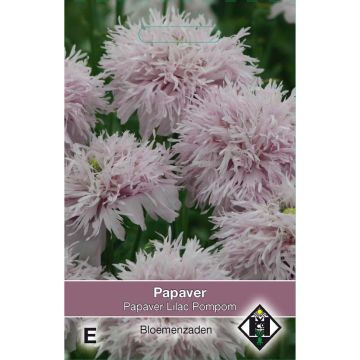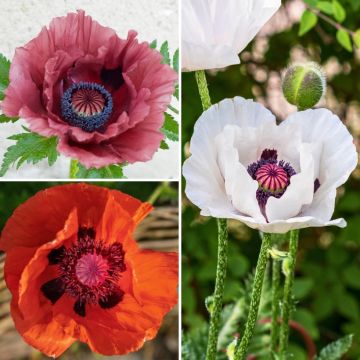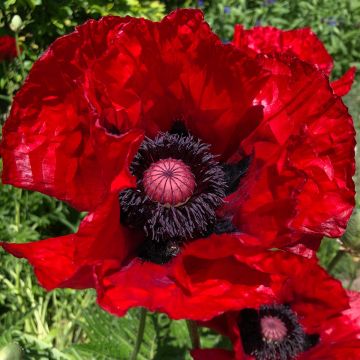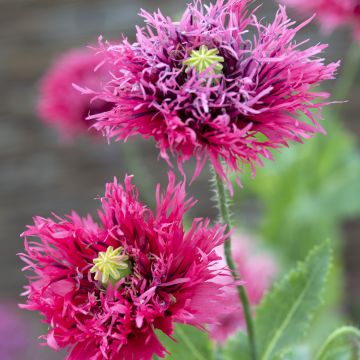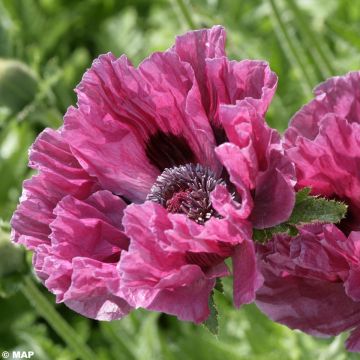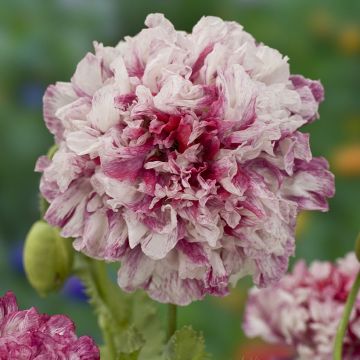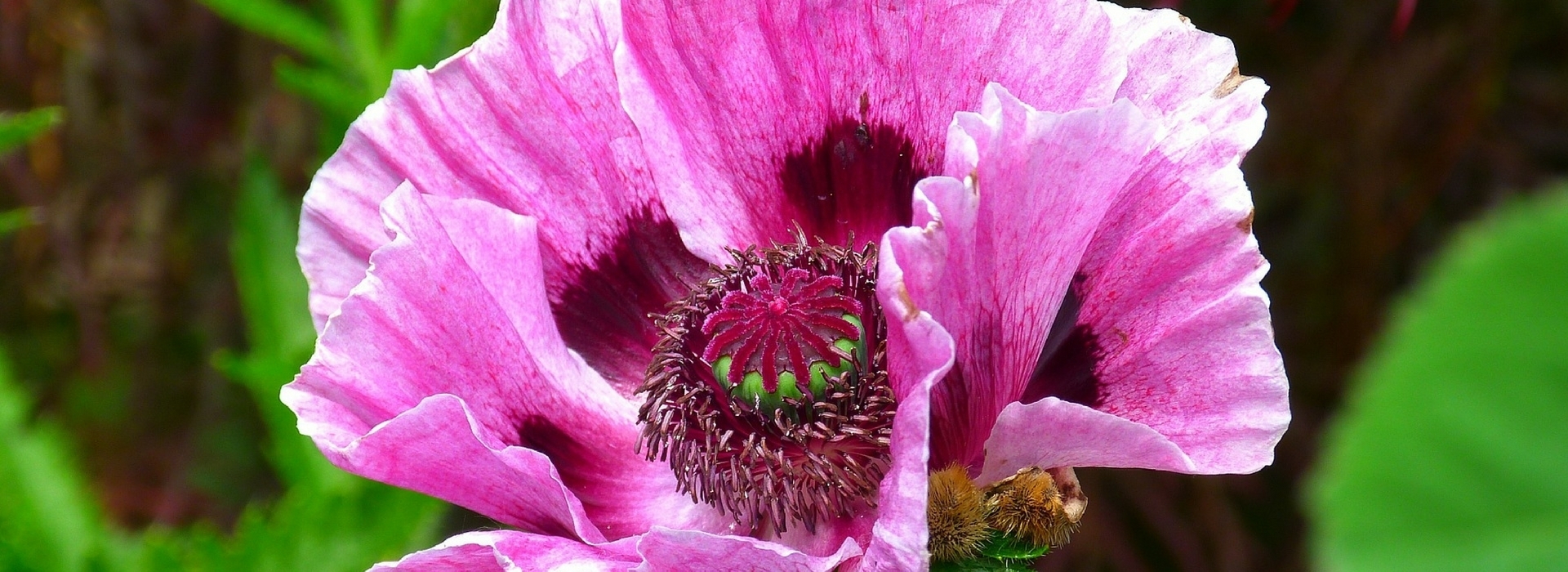
Oriental poppies: how to grow them
Contents
Oriental Poppy in a nutshell
- It is the most common of the perennial Poppies, the one that bears the largest flowers.
- Sunny, the Oriental Poppy with its crumpled corollas is particularly appreciated in borders as well as in vibrant bouquets: it is our flower of the summer!
- Not demanding regarding soil type, easy to grow, and not very susceptible to diseases, Papaver orientale is very hardy and only fears persistent moisture.
- Ideal for adding colour to borders in combination with other perennials or grasses.
- Its establishment is relatively slow and often takes a year, its flowering is ephemeral and lasts from spring to mid-summer, but this perennial Poppy is faithful and will give your garden the charm of natural gardens for decades.
A word from our expert
The Oriental Poppies (Papaver orientale), typical of natural gardens or cottage gardens, are excellent perennial plants to brighten up borders or rockeries from May to July. Easy to grow, their sunny flowers come in red, white, salmon pink, purple, orange… Their enormous corollas with silky, crinkled petals reminiscent of crepe paper, either double or dentate depending on the variety, have inspired Impressionist painters, such as Claude Monet, who filled his garden in Giverny with them.
The Oriental Poppy is the most famous of the large family of poppies: it has the largest flowers (over 20 cm in diameter for the variety ‘Princess Victoria Louise’). Once the flowering is over, they transform into curious, highly ornamental capsules for dried bouquets.
Very hardy (-20 to -30 °C), the Oriental Poppy thrives in all climates. Behind the apparent fragility of its flowers lies a very robust plant capable of thriving in poor, stony soil. Its only requirement is well-drained soil and a sunny exposure.
Botany
Botanical data
- Latin name Papaver orientale
- Family Papaveraceae
- Common name Oriental Poppy, Oriental Poppy or Oriental Poppy for Anglo-Saxons
- Flowering Flowering from May to July, in large solitary and ephemeral flowers
- Height 50 to 120 cm
- Exposure sunny
- Soil type light, well-drained, poor and deep
- Hardiness below -20° C
Originating from Asia, the Oriental Poppy is a perennial herbaceous plant from the Papaveraceae family. The genus Papaver includes over 70 species, divided between annuals (poppies, California Poppy…) and perennials (Himalayan Poppy, Tree Poppy…). Lasting from one year to the next, the Papaver orientale is a hardy perennial plant, making it one of the reliable choices for the garden. If it is the most well-known of all the Papaveraceae family, it is because it has the unique feature of producing the largest flowers. They sway on a long, sturdy stem. All these advantages make it one of the most appreciated perennial Poppies for generously enlivening borders, slopes, or rockeries until mid-summer.
The Oriental Poppy prefers full sun. Any soil suits it, although it prefers light, well-drained soils. It is not afraid of the cold – some varieties can withstand temperatures as low as -30 ° – but it hates having its roots in water, especially in winter: excess moisture would rot the roots, especially in the first year after planting. Therefore, only water if the season is dry!
The long, taproot, fleshy, and brittle root requires deep soil to develop easily and takes a few years to settle in the garden. Perennial Poppies are relatively easy to grow from seed sowing, but young plants in buckets allow for a year of cultivation gain: this year’s sowings will flower in year 3. Our young plants flower the year after their planting (and sometimes as early as the first year if planted early). A bit lazy to establish, the Oriental Poppy makes up for it with its longevity: some mother plants can live up to 40 years!
The habit of Papaver orientale is upright and bushy. It forms a bouquet of flowers about 50 cm wide. Its large deciduous leaves, green or bluish-green, are rough and deeply lobed with dentate edges. After flowering, the leaves dry up to give way, in autumn, to a tight tuft of small rosettes at ground level. When the foliage disappears at the end of summer, the plant leaves a large void: to avoid a too-bare border, pair the Poppies with Wormwoods, Lavenders, Asters, and Nepetas with light flowering or with annuals like Cosmos or Nigella.

Oriental Poppy: at the hatching, leaves and capsules
Around mid-May, the flower stems rise to an average height of 60 to 90 cm (sometimes over 1 m), bearing a single flower bud. The large, hairy flower buds open into large solitary cup-shaped flowers that can measure 20 cm in diameter (‘Princesse Louise’).
The flowers of this large family vary in size, appearance, and shades. From graceful petals that are delicately crumpled or crepe-like and satin-like, in scarlet (‘Allegro‘, ‘Turkenlouis‘), pink (‘Queen Alexandra’, ‘Clochard‘), flamboyant orange, white (‘Perry’s White’) or coral, plum (‘Patty’s Plum’), sometimes speckled with jet black or white at the base. They all have numerous stamens surrounding a black heart. Some varieties are double or have fringed petals.
The ephemeral flowering lasts only about ten days. Well-established plants produce several flower stems, ensuring the renewal of flowers for about 3 weeks.
The fragile corollas then transform into curious greenish-grey capsules, containing thousands of seeds: large, very decorative fruits that will encourage spontaneous sowing or end up in dry bouquets.

Papaver orientale ‘Manhattan’ – ‘Ruffled Party’ – ‘Victoria Louise’
The Oriental Poppy is the dream purchase for gardens without gardeners: it requires no pruning, no special care, and sometimes self-seeds. And since it lives a long time and does not like to be moved, it is one of the best choices for the lazy gardener.
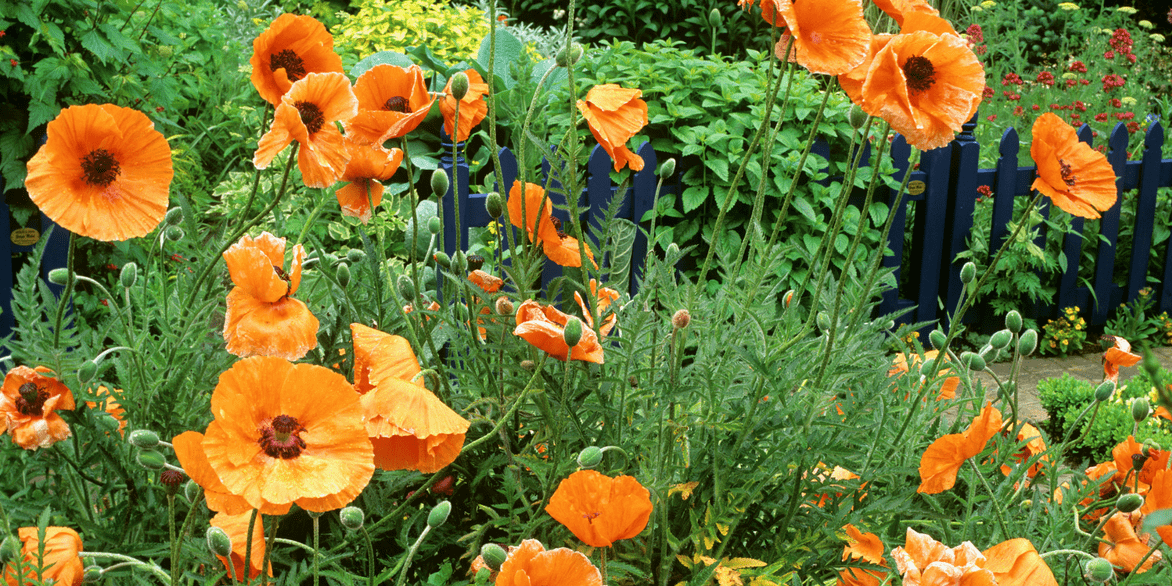
Papaver orientale ‘Harvest Moon’ – Photo Credit-Nicole and Patrick Mioulane MAP
Note: all Poppies secrete a toxic white latex (“milk”) that can cause slight burns upon contact with the eyes: it is better to wash your hands after handling them or wear gloves. However, we searched within the Promesse de Fleurs team for a victim of Poppy burns, but without success!
Unlike the corn poppy (Papaver rhoeas) or the garden poppy (P. somniferum) which are annuals, the Oriental Poppies bloom again every year. Although they are not fragrant, Poppy flowers attract pollinating insects.
Beautiful, useful, and sturdy, these giant poppies have everything to please in both wildflower compositions and more structured gardens.
The main varieties
There are dozens of varieties of Oriental Poppies, from the classics to the most astonishing. With red, pink, or orange petals, spotted or not, fringed or double, the main selection criteria are the colour of the flowers, diverse and surprising depending on the selected cultivars, and their more or less delightfully crumpled appearance.
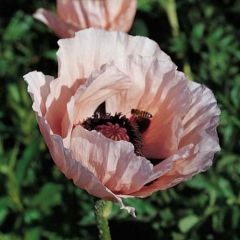
Papaver orientale Prinzessin Victoria Louise - Oriental Poppy
- Flowering time July, August
- Height at maturity 90 cm

Papaver orientale Allegro - Oriental Poppy
- Flowering time July, August
- Height at maturity 70 cm
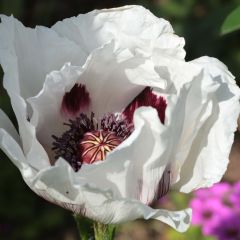
Papaver orientale Perrys White - Oriental Poppy
- Flowering time July, August
- Height at maturity 90 cm
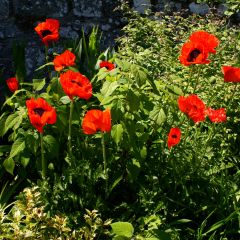
Papaver orientale Beauty of Livermere - Oriental Poppy
- Flowering time July, August
- Height at maturity 90 cm
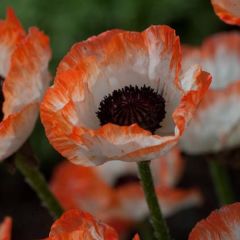
Papaver orientale Picotee - Oriental Poppy
- Flowering time July, August
- Height at maturity 60 cm

Papaver orientale Türkenlouis - Oriental Poppy
- Flowering time June to August
- Height at maturity 70 cm
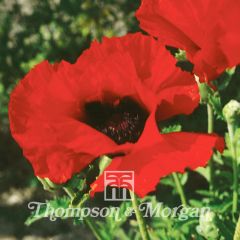
Oriental Poppy Brilliant Seeds - Papaver orientale
- Flowering time July to September
- Height at maturity 70 cm
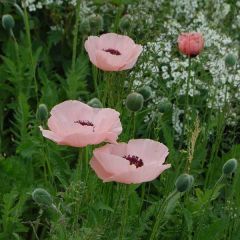
Papaver orientale Queen Alexandra - Oriental Poppy
- Flowering time June to August
- Height at maturity 60 cm
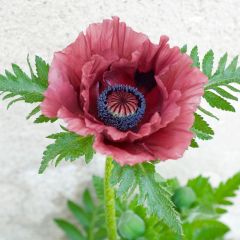
Papaver orientale Pattys Plum - Oriental Poppy
- Flowering time July, August
- Height at maturity 70 cm
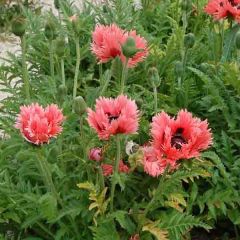
Papaver orientale Clochard - Oriental Poppy
- Flowering time June, July
- Height at maturity 50 cm
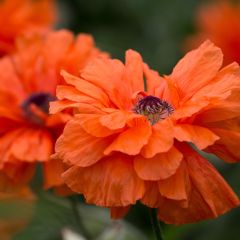
Papaver orientale May Queen - Oriental Poppy
- Flowering time July, August
- Height at maturity 60 cm
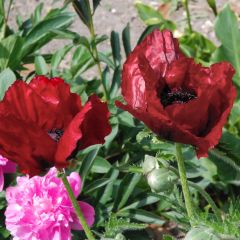
Papaver orientale 'Royal Chocolate Distinction'
- Flowering time June to August
- Height at maturity 70 cm
Discover other Papaver - Poppies
View all →Available in 0 sizes
Available in 1 sizes
Available in 0 sizes
Available in 1 sizes
Available in 2 sizes
Available in 1 sizes
Available in 3 sizes
Available in 3 sizes
Available in 3 sizes
Planting Oriental Poppy
Where to plant it?
The Oriental Poppy thrives throughout France and appreciates all climates. From its montane origins, it has retained a beautiful hardiness that allows it to withstand vigorous climates (down to -30 °C).
It is a full sun plant that enjoys open situations. It can be planted in borders, slopes, dry rockeries, or along the edge of a vegetable garden. The flowers of the Poppy fade quickly after flowering, and the foliage disappears in summer (it may re-emerge in autumn, provided that the faded inflorescences and foliage are cut back early), leaving a bare spot: avoid planting Poppies in too great a number or too closely together, and be sure to pair them with other perennials or ornamental plants that will take over beautifully. Therefore, it is important to choose the right location: in the sun, generally at the back of a border.

Poppy ‘Patty’s Plum’ / GAP Photos – Mark Bolton – Design Liz Legge
It prefers deep, light, fresh, and well-drained soils: its root, sensitive to rot, dislikes waterlogged ground. It favours dry, calcareous, sandy, or stony soils where water does not stagnate. An excess of water can kill it, but prolonged drought will not cause it to fail! If your soil is really heavy and sticky, add pure sand at planting; it appreciates poor soils as well as richer ones.
With their long stems, the Oriental Poppies create beautiful wild and colourful bouquets when mixed with grasses, for example: pick them in bud and immediately cauterise the cut above a flame or let them air dry for 30 minutes on absorbent paper to stop the latex flow.
The long, thick root of the Oriental Poppy needs depth to thrive, so pot cultivation is not recommended.
When to plant it?
Plant the young plants in buckets at the beginning of spring, between February and April. At this time, the risk of frost begins to decrease, and the soil warms up, promoting the rooting of the young plants. However, it is also possible to plant in autumn, from September to November, outside of frost periods.
How to plant it?
- Loosen the soil, digging deeply to about thirty centimetres to allow for the proper establishment of its long taproot.
- If the soil is heavy, compact, and clayey, add coarse sand in a volume equivalent to three times that of the bucket.
- Place the collar level with the soil, neither too deep nor too shallow.
- Fill the hole with fine soil
- Water regularly at first, moderately afterwards, as the Poppy tolerates drought well.
One single plant is enough to add character to a border. To create a “meadow” effect, plant in groups of 3, 5, or 7, spaced about 40 cm apart.
Sometimes Oriental Poppies are sold as bare roots, but buckets generally yield better results.
How to care for Oriental Poppy?
Requiring little care, Oriental Poppies are the faithful friends of weekend gardeners or gardens without gardeners. Cut back the faded flower stems and clean up the yellowing foliage during summer. After flowering, also remove the seed pods if you want to avoid any risk of spontaneous sowing. If the soil tends to dry out in summer, hoe to break the crust at the base.
In very windy conditions, you may need to stake tall specimens: some varieties have stems that can exceed one metre in height.
In dry, well-drained soils, most Poppies are not very susceptible to diseases and pests (some infestations of black aphids may be observed: soapy water will take care of them). However, if the soil is too moist, a white fluff caused by powdery mildew may appear.
How to propagate Oriental Poppy?
Sowing
Perennial Poppies are relatively easy to grow from seed by reseeding those you harvest as soon as the capsules have dried or by purchasing them in packets. Note: “home” sowings are sometimes not homogeneous, and the colours may differ from the parent plant. Dividing the stumps is less random and allows you to retain the original shades. The seeds should be sown directly in place, fairly spaced, from April to July at a maximum depth of 1.5 mm. Rake finely before sowing. Water well until the seedlings appear in 10 to 15 days.
For more information, check our advice sheet: “Sowing seeds directly in the ground”
Propagation by Cuttings
Propagating Oriental Poppy is relatively simple. After three or four years of cultivation, you can multiply it by propagating the roots taken at the end of summer, after the foliage has collapsed. After extracting the plant from the soil, take a few thick root fragments 5 to 8 cm long, then plant them horizontally in sandy soil. Keep them covered and warm until new shoots appear.
Division
Dividing the stump is done at the same time by splitting it with a spade. Replant it immediately. The recovery is sometimes random; it is better to propagate the roots.
These operations can also be carried out in spring, but in this case, you will have to wait an additional year to see them flower. Generally speaking, Oriental Poppies do not like to be moved or divided, and they usually take a couple of years to decide to flower again after being moved or propagated. This slow establishment, coupled with the fact that their lifespan generally exceeds that of the gardener, means that purchasing new plants is often considered a more profitable investment than division.
Pairing Oriental Poppies
The Oriental Poppy is very easy to pair, and it is even inspiring for creating a natural spirit garden, with plants that require little care and maintenance.
To fill the bare space left after its flowering, it is combined with perennials that flower in late summer or autumn (Asters, Hollyhocks, Dahlias, Giant Snapdragons, Heleniums, Anemones, and Autumn Sedums…) whose foliage develops during the summer.
It will set the tone for a flowerbed by adding substance with its strong presence, either by providing contrast or in a monochrome version.
Classically, its intense colours are paired with complementary colours in a cheerful and colourful spirit, with combinations like red – blue, orange – peach, white – purple for example, often associated with upright perennials.
Pair Oriental Poppies with Irises, Columbines, Baptisias, Peonies, Delphiniums in particular… or with Irises and Foxgloves, as in this very chic flowerbed:
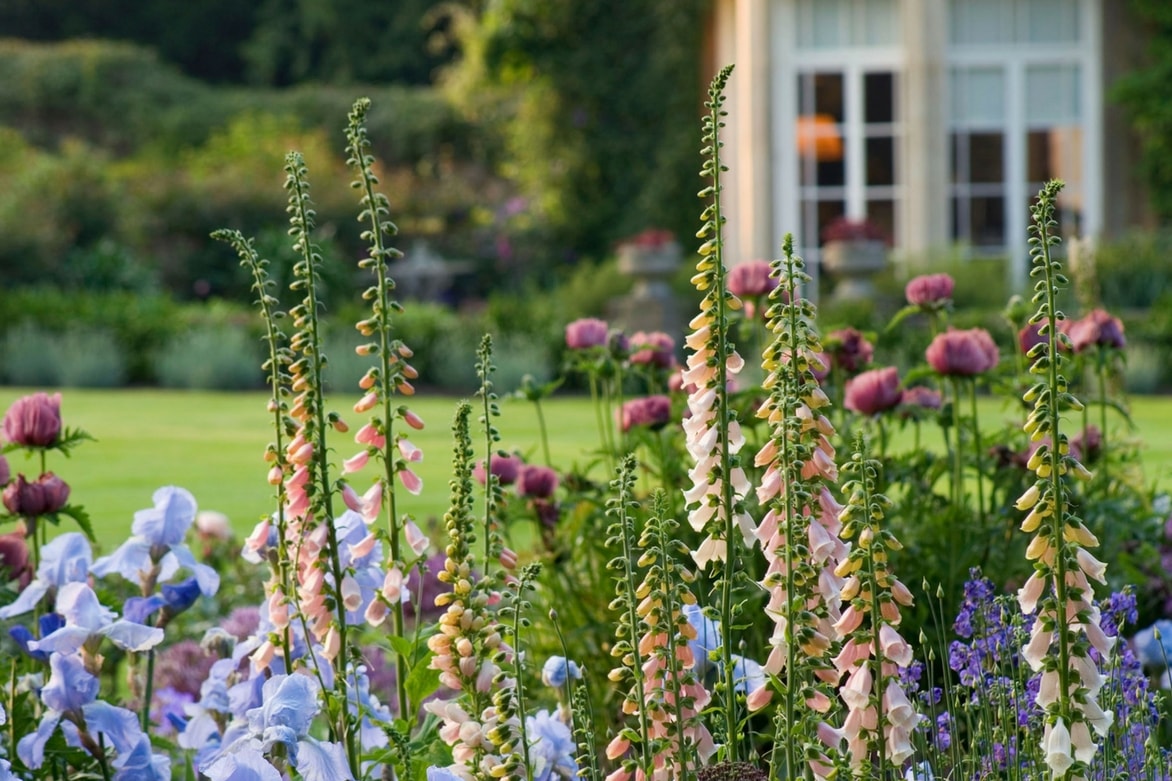
Papaver orientale ‘Patty’s Plum’ – Iris ‘Jane Phillips’ – Digitalis ‘Sutton Apricot’ – © MAP
It is also a must-have for wild gardens and contemporary meadow gardens, it works wonders when paired with fennel or bronze or yellow grasses or combined with airy flowers like those of Crambe or Gypsophila. But with its long and light stems, it also brings elegance and originality to more sophisticated spaces with Allium and Sage.
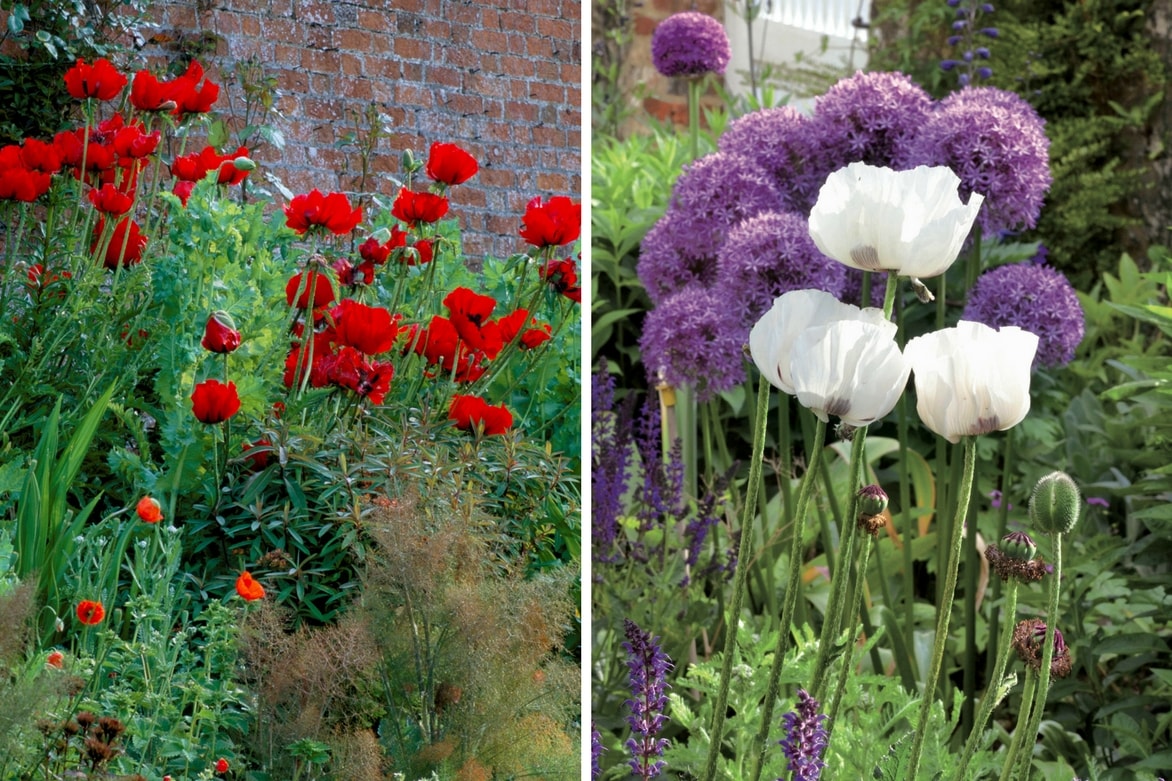
Oriental Poppy ‘Beauty of Livermere’ and Bronze Fennel / Oriental Poppy ‘Perry’s White’ and Allium ‘Globe Master’
Need a bit more inspiration? Discover our advice sheet “Oriental Poppies: 8 ideas for garden pairings”
Useful resources
- On our site, our wide range of Poppies to discover!
- A advice sheet for sowing seeds directly in the ground
- A video tutorial for propagating Oriental Poppy
Frequently asked questions
-
My Oriental poppy, planted this spring, hasn't flowered this year. Is this normal?
Yes, that is normal. Young plants need 2 years of cultivation to flower. For the same reason, sowings of seeds only significantly flower after 3 years.
-
My Oriental poppy, planted this spring, suffered this summer: the foliage has completely dried up. Will it regrow?
Yes, it is very much alive! Perennial Poppies have a form of dormancy in summer, especially if it is dry. They will restart a small rosette of leaves in autumn.
-
My Oriental Poppy isn't coming back this spring: no leaves in April... Is this normal?
No, it’s not normal. Most likely, it died this winter due to excess moisture. Main suspects: a rainy winter, planting in heavy soil and/or in a hollow. Try again, as the Poppy is worth it, by improving the drainage of the soil before planting: add a good amount of coarse sand to the substrate, and if possible, plant in a slightly sloped area of the garden, a bank, or along a wall that is well exposed to the sun.
- Subscribe!
- Contents
